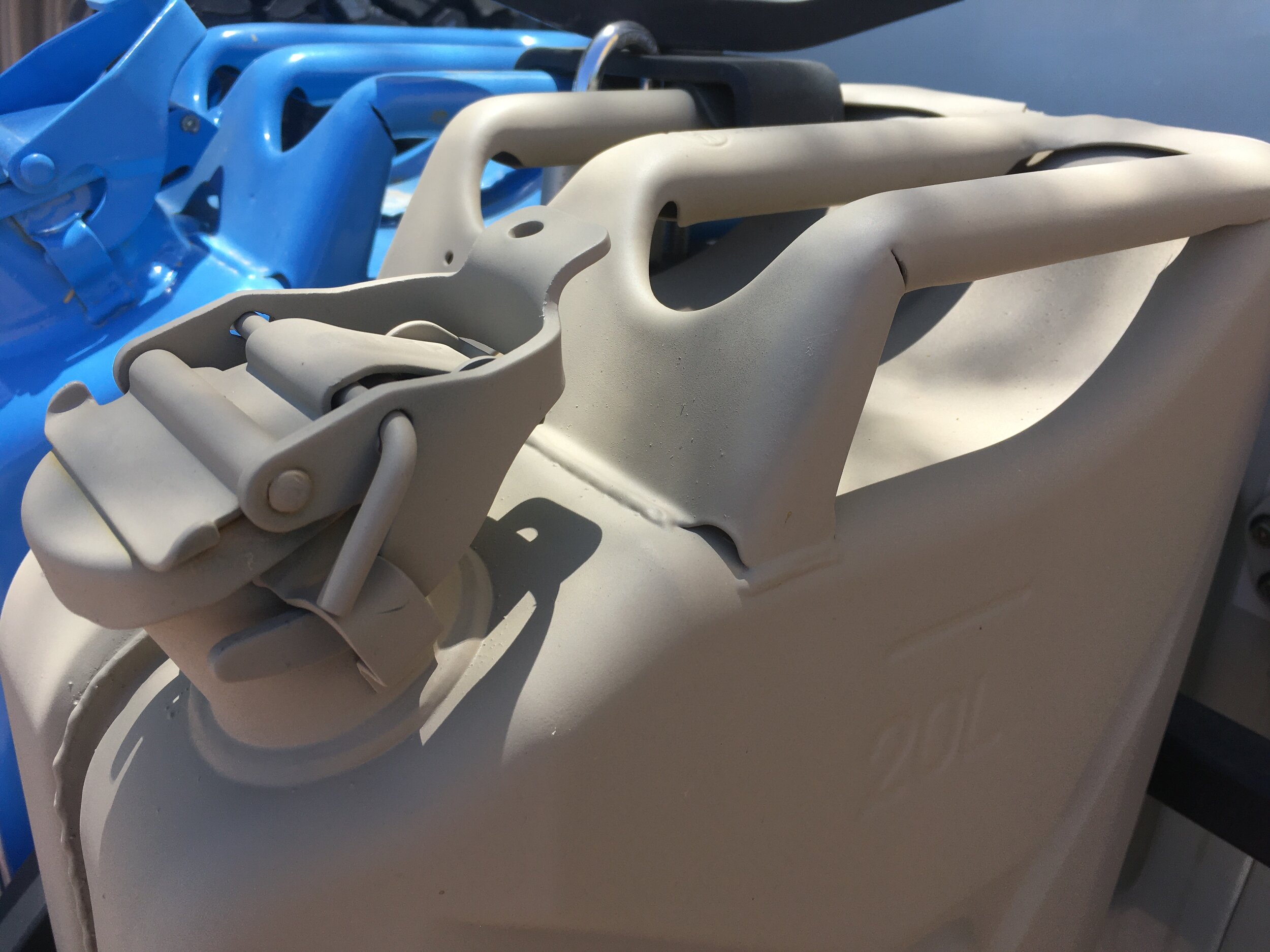Buyer beware: Fake NATO fuel cans
A properly constructed NATO fuel can. Note the full welds on the handle, the fully recessed perimeter weld, and the reinforced spout.
I can smugly claim to have been a very early adopter of the NATO jerry can—at least in terms of U.S. overland travelers—after becoming disgusted with the poor design of the U.S. Blitz cans with which I originally equipped my FJ40’s rear rack. The Blitz cans leaked at the screw-in lid, they seeped at the crimped seams, and they took forever to decant into the main tank via the poorly ventilated flexible spout. I loathed the things but it was all we had. Or so I thought.
Some time in the mid-1980s, after noticing NATO-style cans in photos in various articles (including, IIRC, one by Tom Sheppard), I did some research, and began to realize how superior the original Wehrmacht design was. The Brits and, later, NATO were smart enough to copy exactly the design of the German cans they liberated during the North Africa campaign. The perimeter seam was welded, not crimped; the lid was a small-diameter hinged assembly that cammed tightly closed; a generous breather and properly designed spout made decanting a fast and leak-free procedure. The interior was lined with a rust-proof coating.
For misguided reasons of economy the American military, with their own Wehrmacht can to copy, decided to cut corners, and the result was the hugely inferior Blitz can. In fact the only effective feature we adopted was the three-handle design, made so one soldier could easily carry four empty cans, or two full ones, and so a line of men could easily pass full cans along without fumbling.
I ordered two surplus NATO cans from overseas at absurd cost—and never looked back. They didn’t leak, even when stored on their backs or sides, even in 110º Arizona sun. Decanting was easy and fast. The improvement over Blitz cans was night and day.
Wide breather orifice aids fast decanting.
Surplus NATO cans, and current production models from NATO suppliers, became easily available after the turn of the millenium. Wavian now imports new NATO cans directly from the Latvian factory where they have been made since WWII. (Valpro cans are identical.) Other high-quality NATO cans are available from Gelg (Polish manufacture), although they are made of slightly thinner steel—.8mm versus the .9mm of Wavian/Valpro.
My later testing against the newer U.S. military (plastic) Scepter cans only reinforced the NATO can’s supremacy. Every other Scepter can I tried seeped at the wide lid. You could buy any of a number of special spanners designed to crank the lid as tight as possible, and get it open again—a bandaid “solution” to a poor design. The plastic sides bulged in heat and jammed in their holders. Besides which, being plastic, all Scepter cans are doomed to become plastic trash at some point. Thus, the NATO jerry can remains my fuel can of choice.
However, recently I’ve been noticing Chinese copies of the NATO can that are shockingly inferior to the European-made versions. You can find them on Amazon under the brand name Teekland, for one, and at Walmart (and, I presume, other discount stores). At a glance they look to be identical to their more expensive counterparts, but even a cursory inspection shows this to be a sham. The steel is thinner than the Gelg cans—.7mm. The interior is uncoated and rusts instantly. The handle is attached with spot welds rather than strip welds. The breather is a tiny tube rather than the generous orifice of the Wavian/Valpro and Gelg cans. Also, critically, the welded perimeter seam is not recessed as it is on authentic NATO cans; thus you cannot effectively store these cans on their backs. Absolutely nothing about these ripoffs except the styling is the same as the European-made containers.
Chinese copy. Note the tack welds on the handle, the raised perimeter weld, the flimsy and poorly welded spout, and the undersized breather tube inside.
But there’s worse. The online Walmart ad claims a list prince of $169.99, selling for “only” $64.99. Yet even the premium Wavian can lists for $80; the Gelg for $50. Thus Walmart will sell you an inferior fuel can for more money. (The Amazon can is $50; identical in price to the distinctly superior Gelg.)
So, caveat emptor—look for either genuine NATO surplus jerry cans, or newly manufactured ones from either Wavian or Gelg.




